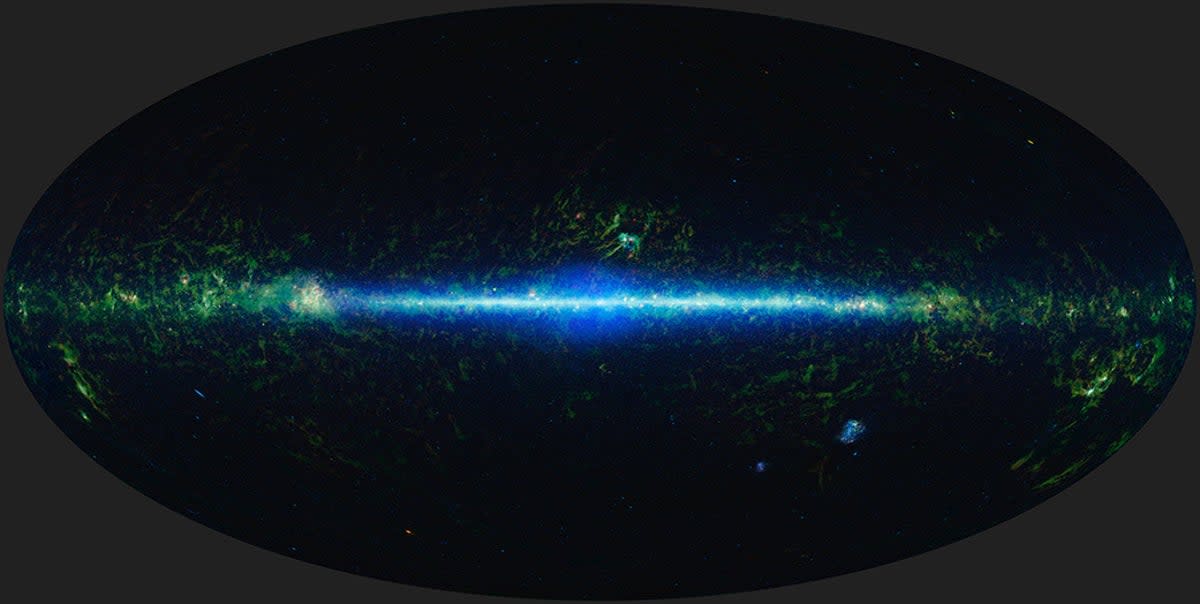Nasa creates incredible time lapse movie of the entire sky over 12 years

Nasa scientists have created a time lapse video of the entire sky as seen over a 12-year period.
The imagery was made possible by Nasa’s Near-Earth Object Wide Field Infrared Survey Explorer, or Neowise spacecraft, an infrared space telescope that has taken images in all directions as it orbits the Earth, completing a full sky mapping every six months, since 2010. Scientists have now stitched together 18 of these “all-sky maps” to create the 12-year time lapse view of the sky, providing a glimpse at how the cosmos has changed over that time.
The focus on changes over time, rather than simply mapping a static sky, is a newer way of studying the universe known as time-domain astronomy.
“If you go outside and look at the night sky, it might seem like nothing ever changes, but that’s not the case,” Amy Mainzer, principal investigator for Neowise at the University of Arizona in Tucson, said in a statement on Nasa’s website. “Stars are flaring and exploding. Asteroids are whizzing by. Black holes are tearing stars apart. The universe is a really busy, active place.”
That’s not to say Neowise hasn’t done a lot of traditional sky mapping as well.
The spacecraft was originally known as the Wide-field Infrared Survey Explorer, or Wise mission when it launched in December 2009. Wise conducted an astronomical survey of objects outside of our Solar system, uncovering millions of supermassive black holes at the hearts of distant galaxies, some of the brightest known galaxies, and 200 brown dwarf stars within 65 light years of Earth.
But Wise required cryogenic coolant to keep its infrared sensors cold enough to detect some wavelengths of infrared light. When the spacecraft ran out of coolant in 2011, Nasa ended the Wise mission.
The space agency revived the spacecraft in 2013, however, realizing it could still make useful observations. They rechristened the spacecraft as Neowise for a new mission focused largely on mapping asteroids within the Solar System and continued to map objects further away.
Neowise has since added another 65 brown dwarf stars to its catalog, monitored 1,000 protostars, balls of gas almost hot enough to ignite and become stars, and begun measuring the size of the disks of materials swirling around black holes.
“We never anticipated that the spacecraft would be operating this long,” Nasa astronomer and Wise project scientist Peter Eisenhardt said in the aforementioned statement on Nasa’s website. “And I don’t think we could have anticipated the science we’d be able to do with this much data.”

